Designing a Forest Garden with Brudenell Primary School
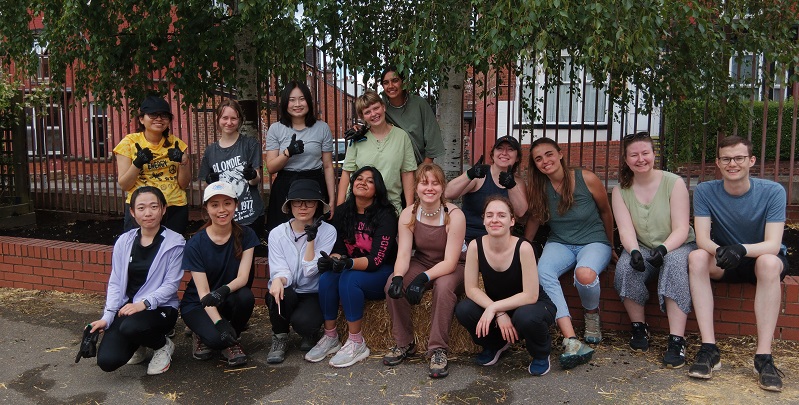
Hi, my name’s Julie and I am a Student Sustainability Architect with a project focused on coordinating gardening projects both on campus and in the local community. I have recently been working with Brudenell Primary School to co-create a forest garden at the school. This is to increase access to green space and help cultivate a closer connection to nature with school children in Hyde Park. Read on to find out why I got involved and how I have found this process.
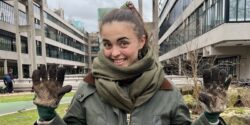
The importance of green space to young people’s development
Living in Hyde Park myself, I realised how much I craved to get out and go into green spaces. I was lucky that I grew up in the countryside where nature was everywhere around me. Many children that grow up in a city today don’t experience this.
However, growing up around green spaces has been shown to significantly benefit children’s physical, mental and social development. Children that do not have this daily interaction with nature become increasingly disconnected from it which can significantly influence their development and health. Brudenell Primary School is one of our local schools in the heart of LS6, and has limited space around it, so there was a great opportunity for us to do something to help create this connection with nature.
My project as a Student Sustainability Architect focused on creating edible spaces and gardens, so I wanted to combine the creation of more green spaces with food growing. This is how the project of a forest garden in the school’s backyard came about. The goal was to create an agroecological system that benefits biodiversity, provides food, requires low maintenance for the school and benefits the children’s health as well as their educational development by reconnecting them to nature and the origins of food.
We wanted to make sure that the children of the school were engaged and involved in the project, so we held a workshop in the school about forest gardening, the benefits of it and how they can design one themselves. At the end of the workshop, the children had to use the knowledge they acquired and come up with a design for their school which included their favourite trees, shrubs, and herbs. This design was then reviewed by us and will start to be implemented at the school in the autumn of this year.
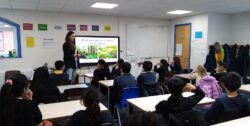
Starting with soil
Nature is a complex system, and even in a small garden, there are many different dynamics at play. Taking a permaculture approach, the first thing to do is to observe the land and your surroundings. Observing and understanding the conditions of your land and the interactions between various elements, from plants to animals to the minerals and fungi in the soil, are crucial to successfully plant.
After working with the school children to come up with their dream forest garden designs, we realised the soil needed some tender love and care before it could support the growth of any plants and trees. It was hard, dry and without much room for new plants to take root - not just from the heat but also from years of being packed down by children playing around the trees. So we decided to first nurture the soil before starting the planting.
The Lasagne Method
It can be tempting to dig up, plough or rotavate compacted degraded earth when you’re creating a green space, but this disrupts the soil organisms, plant roots and natural balance of the soil. ‘No dig’ methods aim to avoid this by putting useful materials on the surface which get broken down and restore the soil. The UK Government’s new Environment Land Management Scheme has even discussed the benefits of such methods in their most recent report.
Like the diversity of nature, there are a few different approaches you can take - we chose the ‘lasagne’ method which involves building up layers of organic matter. This helps to support and protect the structure of the soil by creating a cosier home for the beneficial micro-organisms, fungi, and earthworms which break down the layers and increase the quality of the soil without it being disturbed by human hands. The layer of cardboard also suppresses the weeds, which reduces the need for maintenance work from the school.
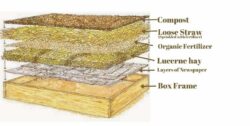
From a sustainability standpoint, one of the greatest things about the lasagne method is that the materials needed to restore the soil in the garden are all recyclables. The materials we used were all gathered from places where they would otherwise go to waste.
Our first layer was cardboard. We broke down things like pizza boxes and delivery boxes, removed any plastic tape, and laid all the material out so that it covered the ground of the garden. We gave this layer a good soak and then we added a light layer of organic fertilizer that was child-safe for use at the school. In our third layer, we used loose straw from a local farm and added some grass cuttings. We had additional material, so we did another round of layers in this order and then finished off by planting some Silver Dust as cover crops. In the autumn, these plants will die off and add to the growing nutrients of the garden.
The lasagne method is easy to do and fairly fun, so if you have an area of your own garden that could do with some love, why not give it a go?
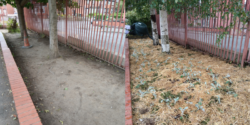
Get involved
If you’re interested in learning more about this method and getting some hands-on experience or want to be a part of developing green space for our community, we will be going back to Brudenell Primary in the fall to finish the garden’s soil restoration and planting. Come join us by emailing sustainability@leeds.ac.uk to express your interest.
The majority of the material we used came from talking to teams around the University! We would like to say a big thank you to:
- Grounds and Gardens for giving us their grass cuttings and spare Silver Dust plants;
- The Refectory for giving us the cardboard
- Jarrod Benson from Spen Farm for the bales of straw
Keep up to date on the latest news
-
-
- Follow us on Twitter: @UoL_Sus
- Follow us on Instagram: @UoL_Sus
- Follow us on Facebook: @UoLSustainability
- Sign up to our Sustainability newsletter
-
 We use the United Nations Sustainable Development Goals (SDGs) as a framework to guide our activity.
We use the United Nations Sustainable Development Goals (SDGs) as a framework to guide our activity.
Find out more about our impact on the SDGs.
